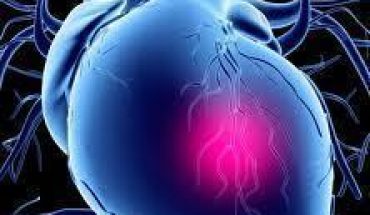Intussusception can be described as the folding of a portion of the intestine inside another part of the intestines. This results in a growth or mass that is formed on the right side of the abdomen which results in severe abdominal pain that can be intermittent. Intussusception is one of the leading causes of intestinal obstruction, and is commonly found in children under two years old, and appears in most cases as colic. Intussusception is three times more common in males than in females and in the majority of cases, the exact cause remains unknown. The remaining cases, however, can be linked to other medical conditions, such as, tumors, lymphoma, and lipoma. Symptoms
The most common symptom of Intussusception is a fluctuating or intermittent abdominal pain. This pain usually increases in intensity, and duration as the condition worsens, and appears as colic in children. Additionally, symptoms of Intussusception in children may include vomiting, bloody stools, lethargy, fever, a lump in the abdomen, swelling in the abdomen, diarrhea, and dehydration. In adults, Intussusception symptoms may appear then disappear, and may include irregularity, an urgency to have bowel movements, rectal bleeding, crampy abdominal pain, nausea and vomiting.
Causes
Intussusception is a condition that is caused when the small intestine folds itself inside another portion of the intestinal wall. This is referred to as “telescoping”. There have been incidents when Intussusception was caused by an alternate medical condition but by and large, Intus susception has no determinable cause. In children, certain triggers have been identified which could explain the appearance of Intussusception. These triggers may include a viral infection, or in cases, a non-cancerous lesion on the intestine. Adult Intus susception may be caused by benign lesions, scar tissue in the intestine, surgical scars in the intestine, digestive tract problems and long-term diarrhea.
Risk factors
Risk factors for Intussusception include:
- Age.
- Sex.
- Abnormal intestinal formation at birth.
- Previous history of Intussusception.
Complications
If left untreated, Intussusception could reduce the supply of blood to the affected portion of the intestine. This causes tissue damage which can cause peritonitis, which is an infection of the abdominal cavity. Peritonitis may lead to death if left untreated.
Treatment
Treating Intussusception is usually a surgical procedure. Once the doctor diagnoses Intussusception, and identifies the lesion by way of a palpation, which is a physical examination used to test for Intussusception, a barium enema is recommended to confirm the diagnosis. Air can be pumped into the colon via the rectum with a view to clear the obstruction. If this does not work, then surgery is scheduled. After surgery, the patient is given intravenous feeding by way of a drip, as well as, fluids. This is done until the patient can resume normal, regular bowel movements. Generally, without surgery Intussusception has a 5-10% chance of reoccurring so it is vital that patients take this condition very seriously and seek help.





